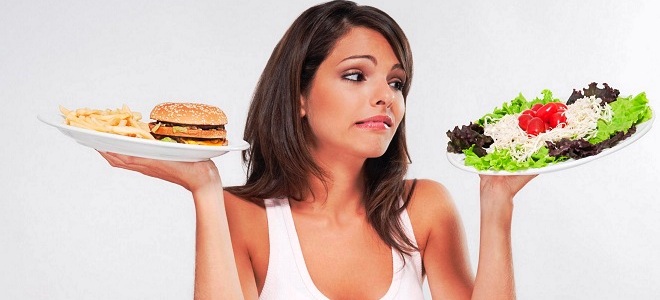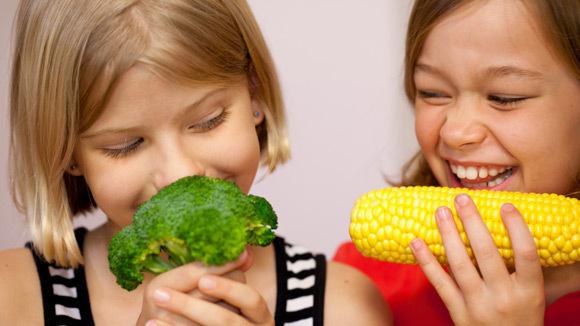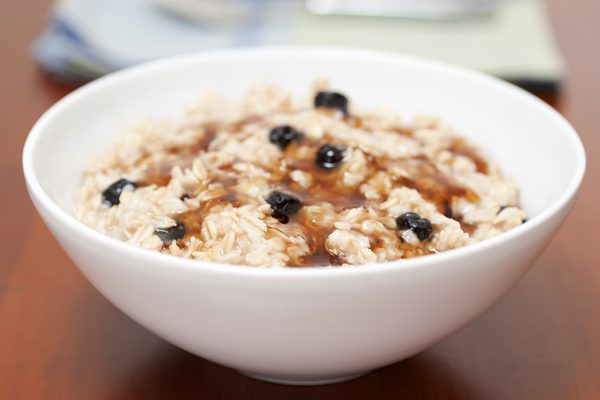One of the common ailments that young parents face is food allergy in a child. It can manifest itself at any stage of life. Even those products that were previously perceived as normal can become dangerous. What leads to such an organism reaction? How to deal with it? Should I panic? This is our article.

What is allergic
According to medical terminology, allergy is the high sensitivity of the human body's immune system to an irritant. It can be found both in food and in the environment. An allergy appears externally in the form of redness on the body. If an allergen enters the body in large quantities, severe peeling of the skin at the site of redness, itching is possible.
The most common cause for allergies is food. When it comes to newborns who are breast-fed, they always pay attention to the nutrition of the mother. Therefore, the need to adhere to a hypoallergenic diet is also spoken at the courses of motherhood, and then after childbirth.
Food Allergy in Infants
From birth, the children's body is an affordable target for various allergens. This is due to the fact that a small organism is just beginning to master the habitat habitual for us, as well as products, most of which are unknown to him. There is such an assumption: in order to avoid allergies in a child even during its gestation, a woman should not be afraid to eat a wide variety of foods. So the child’s body will get acquainted with them, and when the baby is born, he will be able to avoid the fate of the allergic person.

However, this does not always work, therefore, after the birth of a daughter or a son, a woman has to study a hypoallergenic diet for nursing mothers, the menu every day, carefully select products in the store. The surest way to identify an allergen is to exclude everything “harmful” from your usual diet. It can be difficult to do, but have to be patient. As soon as the skin is cleansed, and the baby begins to feel good, you can begin to enter one new product into your menu.
It can be difficult to follow a hypoallergenic diet when there are so many temptations around. Here relatives and other people who surround the young mother should come to the rescue.
Allergenicity groups
To understand which products should be excluded with a hypoallergenic diet, it is important to know their list. There are three groups of allergens:
- What should be removed from the diet in the first place: milk chocolate, cocoa, mushrooms, nuts, citrus fruits, fish and seafood, chicken eggs, smoked meats (meat and fish), caviar, carbonated drinks, spices, marinades, seasonings, dates, figs, raisins , dried apricots.
- These products can also trigger allergies: buckwheat, rice, cow's milk, chicken, peas, chickpeas, beets, tomatoes, currants, bananas, sugar, quail eggs, peaches, apricots.
- In rare cases, allergies are caused by: corn, turkey, rabbit meat, millet, dairy products, green apples, greens.
This is a summary. It happens that the reaction manifests itself on the most harmless products or simply on their smell. The presence of chemically harmful substances in finished products, even in chewing gum, should not be ruled out. Therefore, it is necessary to draw up a menu of a hypoallergenic diet based on natural products that do not contain preservatives, emulsifiers, flavor enhancers, or colorants.

What else can be attributed to non-allergenic products
Safe products include anything that is not on the list above. When drawing up a hypoallergenic diet, a mother who breastfeeds her baby should understand what she can afford to eat. From meat products veal, boiled white poultry meat are suitable. Oatmeal on the water can make a full breakfast. Of vegetables, you can include potatoes, zucchini, broccoli and green peas in the diet.
It is allowed to include baked apples in the menu, preferably yellow or white, you can also cook compotes with the addition of prunes, pears or white currants from them.
Hypoallergenic foods for complementary foods
Babies who are breastfed begin to get acquainted with “adult” food later than those who are breastfed. As a rule, it is mashed potatoes or cereals, which consist of one component. They begin to introduce complementary foods with a small dose - a quarter or half a teaspoon. This allows you to determine the presence or absence of an allergic reaction. If it appears, then this product is removed from the menu for about a month.
Baby food manufacturers indicate on the label of their products that they are suitable for a hypoallergenic diet for children. The age category is usually highlighted in large numbers.
Some mothers are of the opinion that there is nothing better than self-made mashed potatoes. In this they are absolutely right.
It is not at all difficult to choose a baby by age and create a menu of a hypoallergenic diet. You can find enough recipes on the Internet and in the relevant literature. At first, only a few types of vegetables will be required. Start with zucchini, cauliflower, potatoes, peas or squash. The main rule is not to introduce more than one product at a time.
If there is a reaction to the skin (rash, itching, redness), then you must stop injecting this product for a month. The reaction appears because the body is not yet ready for the perception of this component of nutrition. As soon as the skin is cleansed (after about a week), you can try to introduce another product.

The menu of the child on artificial feeding during the introduction of complementary foods
Children who are breast-fed, you can begin to introduce complementary foods along with mixtures. Parents need to consult a doctor regarding the choice of a hypoallergenic diet, which will prevent the development of unpleasant consequences.
From 3 months you can start feeding supplements with fruit puree, starting from 5 grams and gradually increasing to 30 grams. Next, from month to month, you need to add 10 grams of product. Vegetables are introduced from 4 months, cottage cheese and cookies from 5, cereals in milk, mashed potatoes and yolk from 6, dairy products from 7, and from 8 months. - fish fillet. Adhering to a similar scheme of a hypoallergenic diet for children, parents will be able to avoid excessive stress on the baby's body, as these recommendations are based on years of research.
Such a scheme for the introduction of products takes into account the age-related structural features of the child's body. The fact that complementary foods are suitable for a child can be indicated by his monthly weight gain.
Allergies in children from one year and older
Most mothers who continue to breastfeed a child older than a year experience food allergies when introducing multicomponent products into the baby’s diet. In order for the process of transition to adult food to proceed smoothly and not cause an organism reaction in the form of rashes, it is necessary to start with a small amount of those products that have already been introduced earlier.

Children's hypoallergenic diet consists in the fact that dishes should be prepared with a minimum content of oil and salt. Starting from the year, mothers introduce cereal soups, vegetarian, based on secondary beef broth into the baby’s food. If we talk about cereals, then it is rice, oat, buckwheat. Stewed fruit compotes are gradually introduced, as well as apples, currants, plums, cherries. In the season, you can start to introduce cucumber, herbs.
Nursing mom's nutrition
If we consider separately what a nursing mother should eat, then the same approach is observed as with baby food.
As a rule, after childbirth, many women switch to a hypoallergenic diet. Moms, whose menu is not very diverse, begin to experience real stress. Therefore, it will be worthwhile to think about the fact that you will have to control yourself at first during pregnancy. A smooth transition to proper nutrition will allow mom to adhere to a diet without unnecessary worries.
If the child is already allergic
Medical nutrition in this case will be compiled under the supervision of a physician. It is important to identify the allergen to which the child has a reaction. Only then recipes for a hypoallergenic diet are selected. Doctors noted that after eating, children who suffer from allergies and atopic dermatitis should avoid physical activity. If the child is mobile, then it is advisable to occupy him with calm types of games, looking at pictures or reading books. The duration of the diet is at least a month.

Right menu
We suggest you familiarize yourself with how a hypoallergenic diet for a nursing mother can look like for a week. The list of products we have provided above. Recall that they should all be fresh and of high quality. Do not use products that have expired. The proposed menu option is approximate. You can change the dishes as you wish. It is important that prohibited foods are not included in the diet.
Menu for the week:
- Monday. Breakfast - oatmeal brewed on water, instead of bread cracker without salt. Lunch - soup on the second beef broth, but without the addition of carrots, a salad with cucumber, corn and Chinese cabbage, seasoned with vegetable oil. Snack - pear jelly, biscuits. Dinner - dumplings of lean veal meat and finely chopped cauliflower steamed, apple compote.
- Tuesday: Breakfast - kefir, buckwheat porridge on the water. Lunch - mashed cauliflower and potato, low-fat veal (boiled), berry jelly. Snack - low-fat cottage cheese with a little sugar. Dinner - lamb stew with vegetables.
- Wednesday. Breakfast - millet porridge on the water with dried fruits. Lunch - an oven-baked apple. Lunch - noodles with beef meatballs. Salad of greens and zucchini. Snack - kefir and biscuits. Dinner - buckwheat on the water, stewed vegetables.
- Thursday. Breakfast - pancakes with buckwheat flour, white yogurt. Second breakfast - low-fat kefir. Dinner - with fresh cabbage and veal. Cucumber salad with greens. Afternoon snack - yeast-free bread and low-fat kefir. Dinner - veal meatballs stuffed with vegetables.
- Friday. Breakfast - pancakes with cottage cheese. Lunch - biscuits and tea. Lunch - vegetable stew with lean beef, bread with bran. Snack - yogurt without additives. Dinner - cutlets with rice and lean beef, baked in the oven.
- Saturday. Breakfast - multigrain cereal cooked on the water. Lunch - tea and a sandwich with unsweetened apple jam. Lunch - vegetable broth with beef meatballs. Snack - low-fat kefir. Dinner - vegetable stew with veal.
- Sunday. Breakfast - cereal porridge with diluted milk. The second breakfast is a baked apple. Lunch - soup with homemade noodles and low-fat veal, a salad of greens and cucumbers. Snack - lingering cookies or biscuits, pear jelly. Dinner - beef meatballs, a side dish of stewed cabbage.
Useful recipes

Biscuits are excellent for a hypoallergenic diet. You can cook them yourself, which is why they will only be more delicious. To do this, you need to take:
- 1 tbsp. oatmeal (shallow or chop in a blender).
- 1 chicken egg.
- 1 tbsp. l sugar and ½ tsp salt.
- ½ milk of low fat content.
- 2-3 tbsp. l raisins.
All ingredients must be mixed with a whisk, leave for 10 minutes. to oatmeal swelling. Heat the oven to 200 degrees, pour raisins with water and let stand. Then mix with the dough. Cover the baking sheet with parchment paper, put the dough on it with a spoon and send it to the oven. In 20 minutes. the biscuits will be crusty and ready.
Here's another recipe for a diet dish - steamed meatballs with cauliflower.
We will need to purchase:
- Veal (500 g).
- Onions (1-2 heads, which will depend on their size).
- Salt.
- Water.
- Cauliflower (1 head).
A dish is prepared according to this scheme:
- Wash the veal, grind in a meat grinder, put the minced meat in a bowl.
- Remove the peel from the onion, wash, chop.
- Add onion to the mincemeat bowl, add salt, and mix thoroughly.
- Form meatballs.
- Pour about 3 cups of water into the slow cooker. Put meatballs there. Close the cover. Install the “Steaming” program. The process should last half an hour.
- At this time, wash the cauliflower, divide into inflorescences and cook them in salted water. You need to try cabbage preparedness with a fork. If it easily pierces the inflorescences, then the cabbage is ready.
- Drain the pan. Grind cabbage inflorescences in a blender until a homogeneous consistency.
- Put the finished meatballs on a plate and pour them with cauliflower mass.
This dish can be given as food for children aged 6 months and older. For mom, it will be more useful and satisfying to eat it with a side dish, for example, with rice.